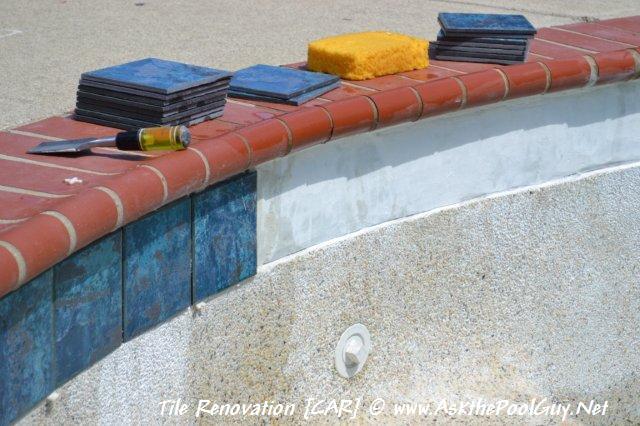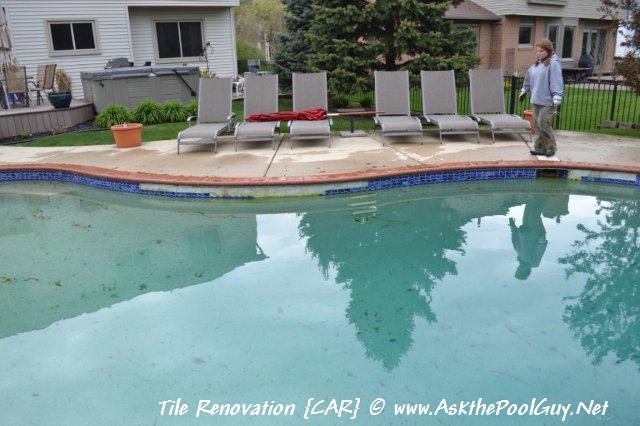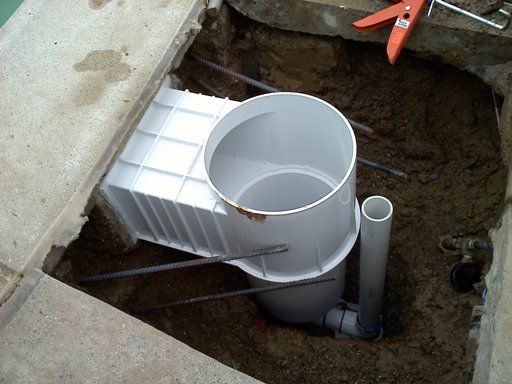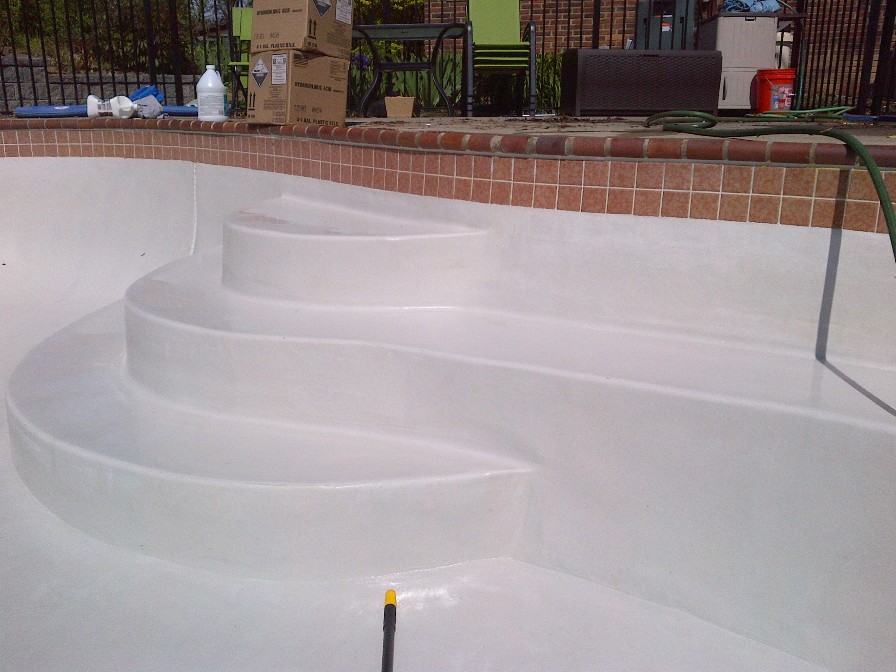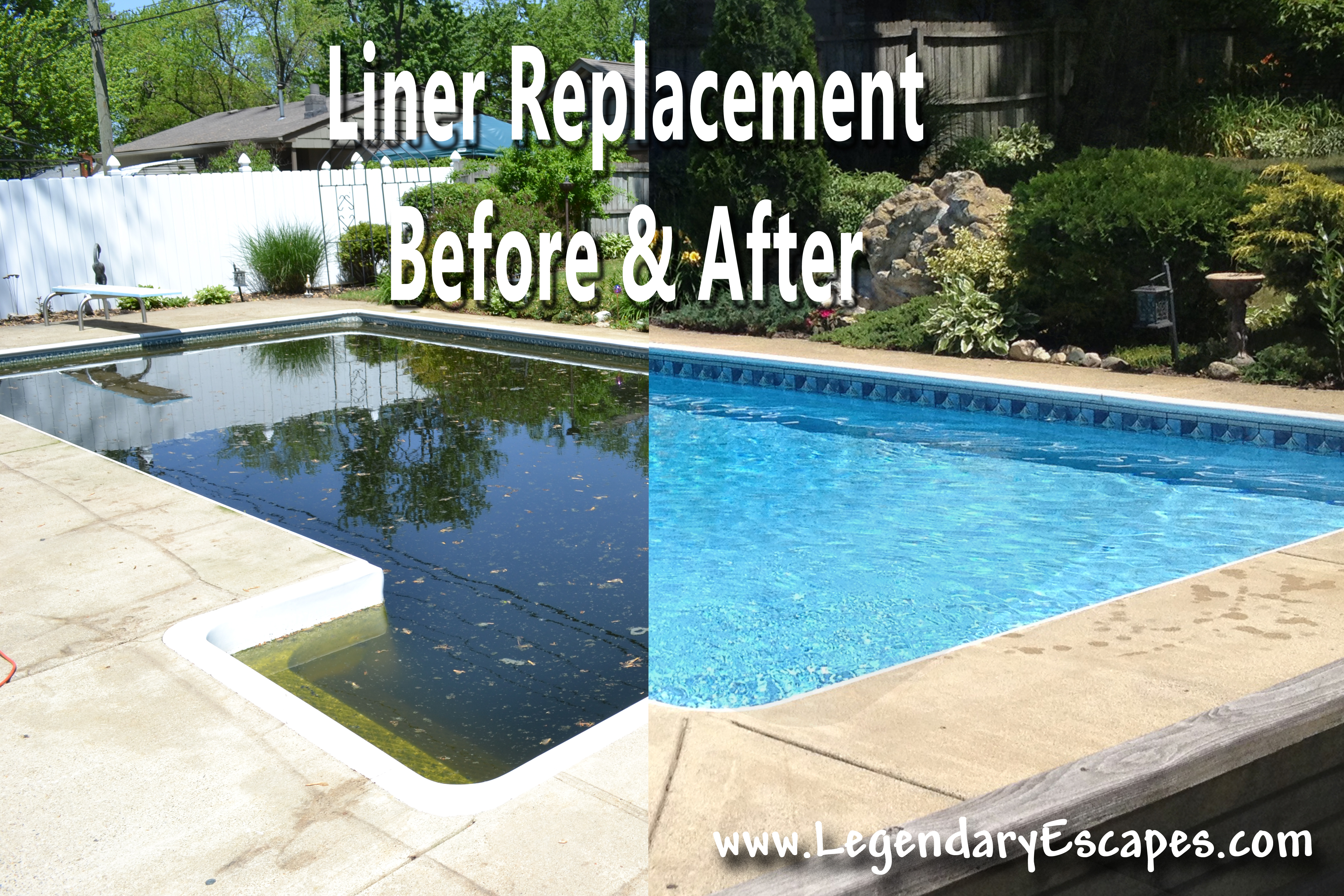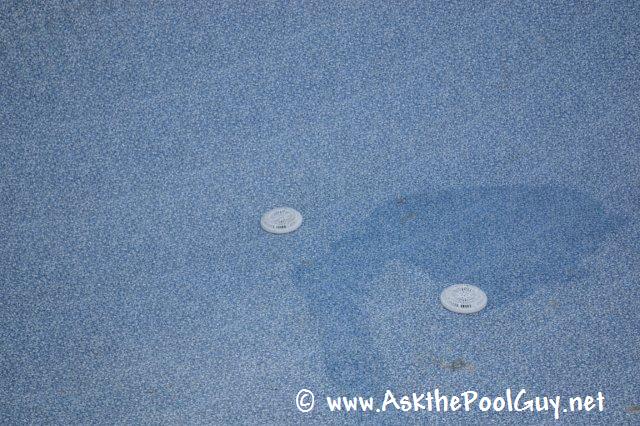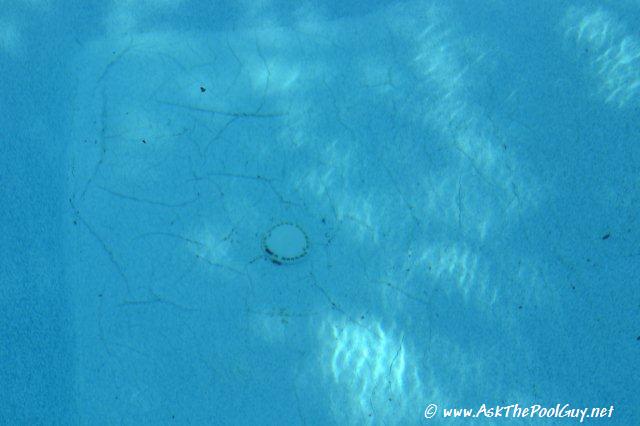Swimming Pool Renovations
Swimming pool renovations can be performed on all types of pools to increase the aesthetic appearance, fix functional issues, and overall add a fresh new look, feel, and function to a pool.
Gunite Swimming Pool Renovation
A traditional gunite swimming pool renovation will typically include work on the tile, coping, patio, skimmer, and the pool surface itself such as marcite or pebble.
Tile and Coping Replacement on Gunite Swimming Pools
It is possible to perform a renovation and replace the tile at the waterline of the pool. Keep in mind if you would also like to renovate or replace the coping, this should be done at the same time as the tile since the removal of the coping stones could cause tile to fall off and it is best to plan ahead. The definition of coping is the cap on the edge of a swimming pool or spa, which is mounted on the bond beam.
The function of Swimming Pool Tile
Tile on a swimming pool performs the functional purpose of disguising the scum line or “bathtub ring” that would be visible on the surface of the pool due to the fluctuating water line due to evaporation, bather load, and water level. Many homeowners may wonder if eliminating the tile line would be a better option, especially in climate where freeze/thaw and beam shear may be a concern. The tile is really the best option for the top edge of the pool, as it hides many of the issues that are inherent with gunite. If the tile line were removed or left off of a pool that was built in a typical fashion, the gunite or marcite may develop the cracking and chipping at the frost line, as well a leave that unsightly ring around the pool. There are new methods of building where the interior pool finish is rolled right over the edge of the pool, so there is no need for tile in some cases.
Gunite Swimming Pool Surface Finishes
The pool surface can be refinished with the traditional white marcite, the marcite could be dyed a color, or a pebble or other aggregate finish could be used.
Painted Gunite Swimming Pools
If a gunite swimming pool has been painted, typically the pool will need to be re-painted every 1-2 years. If you haven’t already painted your gunite pool, we recommend that you do not. It’s relatively simple to acid wash a gunite pool surface, whether marcite or pebble, but once you put paint on the surface it is not a great option. The only way to return a painted gunite pool to it’s best condition would be to sand blast the paint off the surface and perform a re-marcite or re-pebble process.
Gunite Swimming Pool Main Drains
When a gunite pool is being re-surfaced, it is also a great time to perform a main drain update. Many older gunite pools are equipped with just one main drain. The code currently requires two dome-shaped drains, spaced at least 5′ apart be installed on new installations. At the least the main drain should be changed to reflect the dome-shape, and wherever possible, updating to two is the best choice.
Gunite Swimming Pool Skimmers
Gunite pools also often experience leaks at the skimmer, and cracking in the skimmer itself. This is due to the shifting of the ground for a variety of reasons, including seasonal freeze/thaws, and overall ground movement. It is very common to see pool putty in a gunite skimmer that helps to patch any leaking areas to try to avoid having to replace the skimmer entirely. A skimmer replacement can happen at any time, and would include cutting the concrete or patio to expose a foot or two of work space surrounding the skimmer. The skimmer is then dug out, removed from the pool deck, and the pool, and a new one installed. There may be some damage to the tile or surface of the gunite pool, no matter how careful the process may be, so some patching and repair work of the marcite, pebble and tile may also need to be done.
Lifespan of Tile, Coping, Marcite and Pebble
Swimming pool tile, even when installed perfectly, can shift and fall off a pool in some cases within a year of being installed. Especially in freeze/thaw climates, even the most meticulous of installations cannot be guaranteed.
The surface of the pool, whether marcite, pebble, or alternative finish should last 10-30+ years. Over time the water chemistry will affect the surface, and can cause etching or pitting in the surface. These are the lines or pock marks that show up in the pool. These happen because when water conditions become aggressive, the water will pull minerals out of the surface of the pool, effectively eroding the surface. The surface may also become rough, either due to the etching or pitting, or in the reverse case, when water deposits minerals to the surface of the pool.
Homeowners often choose to perform gunite pool renovations to address functional issues, though many times it’s purely aesthetic. If your family enjoys a pretty pool more than an older looking or dated pool, then it’s always a great decision to make.
Vinyl Liner Swimming Pool Renovation
A vinyl liner swimming pool renovation can include something as simple and straightforward as a liner replacement, or it can become more involved and include changing the coping and liner track style, repairing the bottom of the pool which is usually vermiculite {hard bottom} or sand, and in some cases concrete. Skimmers, return fittings, and lights are also the other areas where a vinyl liner pool can be renovated.
Vinyl Liner Swimming Pool Coping and Liner Track
Replacing the vinyl liner can make a huge difference in the overall swimming pool look and feel. If there is any thought that the liner track is fatigued or “letting go” of the liner, it must also be done at the same time as the liner replacement.
Vinyl Liner Swimming Pool Main Drains
When a liner is being replaced is also a great time to perform a main drain update. Many older vinyl liner pools are equipped with just one main drain. The code currently requires two dome-shaped drains, spaced at least 5′ apart be installed on new installations. At the least the main drain should be changed to reflect the dome-shape, and wherever possible, updating to two is the best choice.
Vinyl Liner Swimming Pool Coping
Coping on a vinyl liner pool has also come a long way. Aluminum bull nose coping was the industry norm for a number of years, and included the “coping” as well as the liner track. Current choices can include using more materials as the coping including one of the Pool Guy’s favorites, tumbled bluestone. Cantilever patio decks where the concrete comes over the top edge of the pool are also fairly popular, and in that case the liner track would be installed at the top of the steel pool wall for the liner to connect into.
Best time of year to perform renovations
Many homeowners ask what is the best time of year to perform a swimming pool renovation. The answer to this question has many variables. Anytime that it needs it is a great time to perform a swimming pool renovation project. You may want to take into consideration the climate, as most renovations are best done in favorable weather conditions, where it is warm enough that materials used are not so cold they are freezing and brittle, and not too hot that they are melting and sagging.
Another consideration will be the schedule of the contractor. Based on when they are available to perform the work is always a great determining factor.
Late fall versus early spring is also a good time to think about a renovation. Once the summer is winding down and the pool has been enjoyed, it’s much less stressful on the homeowner and the contractor if the renovation doesn’t have to be rushed so the pool can be used. The weather conditions are often favorable, warm and dry, this time of year as well.
Early Spring Renovations and Ground Water Issues
Early spring when it is often the wettest is not the ideal time to perform a renovation on either a gunite or vinyl liner pool. Ground water pressure is a concern with a gunite pool. While it is essential that when draining a gunite pool {under the supervision or direction of a pool professional} that they hydrostatic relief valve in the bottom of the main drain functions to pop open and allow water in if the ground pressure is greater than the pressure holding the pool in place, it’s also important that you choose the right conditions to even attempt this. Please don’t think you are saving any time by draining your pool while you wait for quotes or a pool professional to come and evaluate your pool. It is never a good idea to empty a gunite swimming pool, unless you know exactly what you are doing.
Ground Water and Vinyl Liner Swimming Pools
The concern with wet conditions for a vinyl liner replacement are that once the liner comes out, if ground water starts pouring into the pool through cracks in the hardbottom, or in between the steel walls it can cause issues with setting the liner properly and wrinkles. If ground water cannot be avoided there are several options, such a burying a pump under the pool, installing ancillary sump pumps near the pool to drain the water, or having a pump available during the installation to remove the water just long enough to get the new liner in and water on top of the liner to keep the ground water under control.
Floating Swimming Pool Liners
If you have a vinyl liner pool that experiences floating, it is a good idea to assess your yard and conditions. It is possible that a floating liner is caused by a leak in the liner, a pin hole is enough to drain an entire swimming pool. Other potential causes of a floating liner could be inadequate yard drainage, where the yard or patio slopes toward the pool rather than away from it. Gutters and downspouts on a home also protect the pool from the additional watershed that could occur. Broken underground sprinkler lines have also been found to cause water issues. If soil conditions are sand based, most water will drain away from under a pool relatively well. If the conditions are clay, or swampy with a high water table, some of the water remediation options may need to be explored.
Lifespan of Vinyl Liners
If a swimming pool liner is floating, it is often possible to drain the water from behind the liner and reset it. This is possible if the liner is newer (within 5 years of original installation). The typical vinyl liner will last up to 20 years, with the average being 10-12. The longevity of the liner depends on the care of the liner, attention to water chemistry, and overall pool environment. Often a liner will fade and the pattern will become less visible due to the sun and chemical use. If a liner is torn or ripped, sometimes a patch can be used to lengthen the lifespan of the liner. Once a liner gets older, it becomes less pliable and more brittle. In this instance, attempting to reset a floating liner could cause harm to the liner, and a full replacement would be recommended. It is also common to see liners start to pull away from the corners as they get older and more brittle. If the corner of a vinyl liner tears, patching will not usually hold, and the liner should be replaced.
pH Wrinkles in Vinyl Liners
Another issue which is often present in vinyl liners are small wrinkles covering either a small part, or sometimes the entire surface of the pool walls or floor. These are called pH wrinkles, and are caused when the water chemistry is not maintained in the proper balance. Once pH wrinkles form due to the liner absorbing water due to low pH, low alkalinity or stabilizer levels, or excessive use of bromine, there is no way to remove them, and the only option would be to replace the liner.
Homeowners often choose to perform vinyl liner pool renovations to address functional issues such as leaking or wrinkling, though many times it’s purely aesthetic. If your family enjoys a pretty pool more than an older looking or dated pool, then it’s always a great decision to make.
